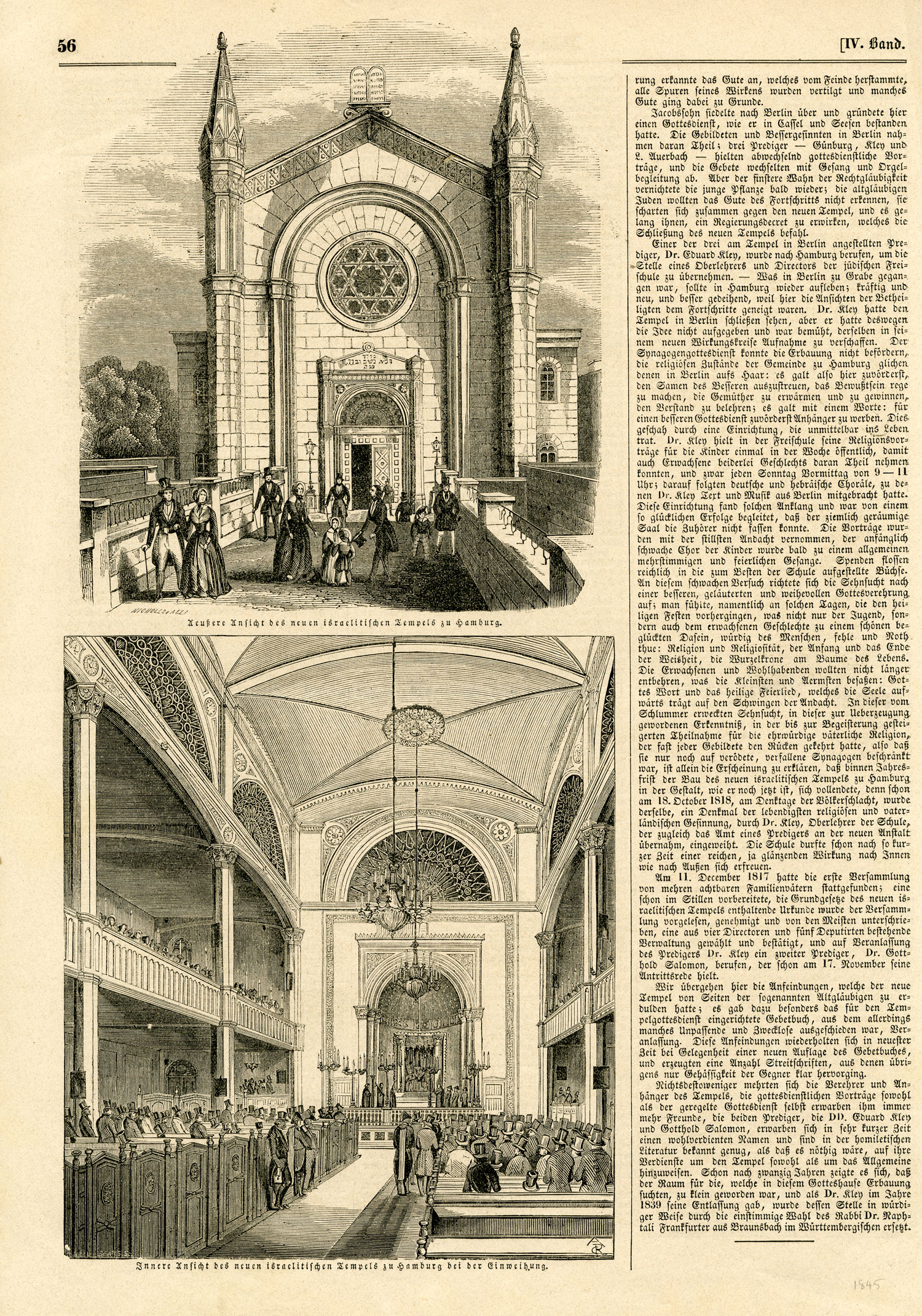The Israelitischer Tempel on the Poolstrasse, inaugurated in 1844, was the second synagogue built by the Jewish Reform movement in Hamburg, Germany, replacing an earlier building inaugurated in 1818. The congregation had grown to 800 members and needed more space and successfully obtained permission to build—albeit out of sight, following the custom of the time. The bold new building, an eclectic mix of Romanesque and Gothic elements, was a clear sign of the growing success of Reform Judaism. Its designer, Christian German architect Johann Hinrich Klees-Wülbern, also designed the Israelitische Krankenhaus (Jewish hospital) in Hamburg.
This exterior view of the building makes it appear much more public than it was. In fact, the temple was situated on the interior of a lot behind a four-story building and could be reached only through an alley, a practice common throughout Germany and Central Europe since the Middle Ages. Though hidden, this structure, unlike the Kohlhöfen Synagogue built in Hamburg a decade later, is clearly identifiable as a synagogue, with a Star of David inlaid in the rose window and tablet of the Ten Commandments atop the structure. New to synagogue architecture was the single door for both men and women, a sign of a new egalitarianism in the Reform movement. Still, once inside, men sat downstairs and women sat in galleries. The temple accommodated 350 men and 290 women.
The congregation moved from the Poolstrasse to a new temple on the Oberstrasse in 1931. The Poolstrasse building was destroyed in 1944 by the Allied bombing of Hamburg.
